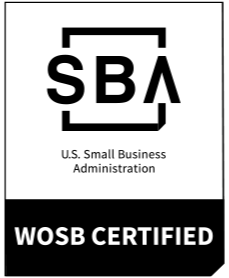The Perils of Technical Stagnation: Why Standing Still Is Not an Option
You’re standing at the edge of a train platform, feeling the intense rush of air as a high-speed train blazes past. The power of the mechanical beast is awe-inspiring — a testament to the relentless progress of engineering.
Like that speeding train, technology is rapidly advancing. During digital transformation, these technological advancements are no longer optional—they’re essential for your organization’s survival.
Staying ahead of technology trends requires more than adopting the newest, shiniest gadget or software; it’s about understanding how these innovations can reshape industries, streamline operations, and elevate customer experiences.
Adapting to change enables you to seize opportunities to lead and redefine industry standards. Companies that fail to keep pace and cling to outdated systems and processes risk veering off track. This resistance, whether due to fear of change, budget constraints, or a lack of understanding, leads to technical stagnation, which can have dire consequences if not addressed.
1. Keep Your Competitive Edge
One of the most immediate risks of technical stagnation is falling behind your competition. Innovation drives success, and organizations that fail to evolve risk losing that competitive edge—and their market value.
Organizations that adopt new tools and platforms can enhance operations, improve customer relationships, and innovate in ways stagnant companies cannot. Adopting the latest technology is also key to growing an engaged workforce—job seekers are drawn to technologies that allow them to work more efficiently and collaborate more easily with their colleagues. Organizations that resist change may be unable to match the agility, efficiency, and offerings of their more tech-savvy rivals and struggle to attract the talent needed to inspire innovation and growth.
Effective teams must trust each other and align to a shared vision. Our Cultural Awareness and Trust principles empower teams to innovate fearlessly, turning collaboration into a driving force for success. Organizations that embrace this approach outperform their competitors.
2. Increase Efficiency
New technologies are designed to increase efficiency—one of the core goals of our Time Compression and Value Maximization elements. Outdated systems cause users to grapple with inefficient processes that waste time and resources and demoralize employees who are forced to work with suboptimal tools. By automating processes, improving data analytics, and streamlining communication, companies save time and maximize resources, allowing employees to focus on higher-value tasks.
The opportunity cost of not upgrading is substantial, as organizations miss out on the chance to optimize their workflows, reduce errors, and boost overall productivity.
3. Adopt and Adapt
As industries evolve, adaptability is no longer a choice—it’s a requirement. Leadership plays a key role in guiding organizations through this change, with a foundation of Trust and clear communication, keeping teams focused and motivated.
Outdated technologies hinder an organization’s ability to scale, innovate, and meet customer expectations, stifling growth and eroding brand reputation. Customers and partners may perceive the organization as out-of-touch or incapable of delivering modern solutions.
It’s not enough to react to changes in the tech landscape; organizations must anticipate them and plan accordingly by staying informed about emerging trends, investing in employee training, and developing a strategic roadmap for technology integration.
Adopting and implementing new technology requires input, buy-in, and support from the entire organization. To create a culture primed for adoption, leaders must communicate changes early and often, provide clear, achievable timelines and milestones, and foster trust among their teams. Doing so not only makes your digital transformation easier, but also sets you up for long-term success.
Technology demands that we keep up or risk falling behind. The dangers of technical stagnation are clear: organizations that resist adopting new technologies do so at their own peril, risking competitive disadvantage, operational inefficiencies, and stunted growth.
If you stand still long enough, you’ll miss the train—and the opportunity. We invite you to embrace a future of innovation and collaboration. Explore our Elements of Brilliance™ to see how we can help keep your organization on track to success.
About Emerald One
Emerald One, LLC is a 100% woman-owned small business focused on closing the gap between strategy and execution and specializes in digital transformation, resource value maximization, new asset alignment, and executive coaching and communication.







